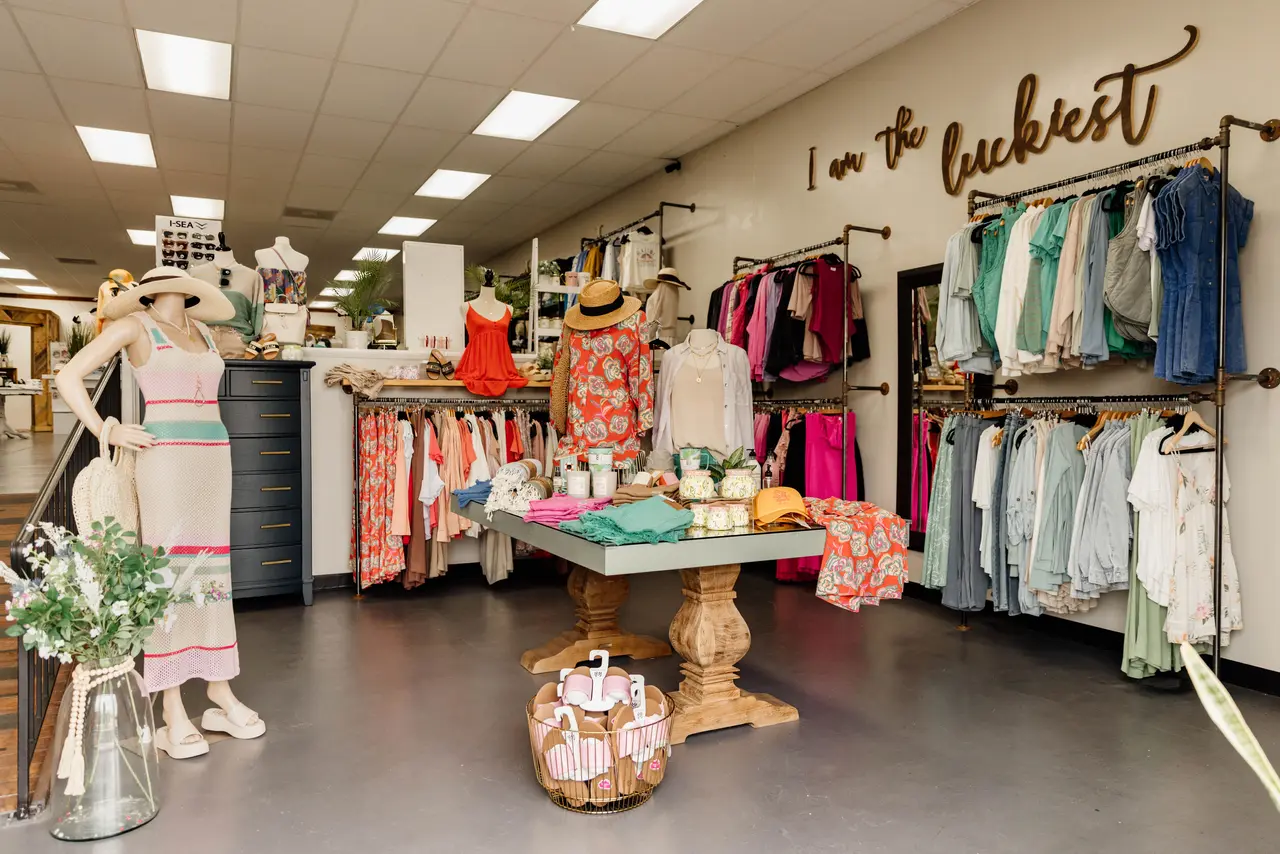Check Out the Latest Patterns in Boutique Fashion for every single Season
Check Out the Latest Patterns in Boutique Fashion for every single Season
Blog Article
Lasting Fashion: How Eco-Friendly Clothing Is Shaping the Future of Design
As the fashion market deals with raising scrutiny over its ecological impact, the rise of sustainable fashion supplies an appealing choice that aligns style with ecological duty. Utilizing cutting-edge materials such as plant-based textiles and recycled fibers, alongside advanced techniques like electronic and 3D printing, developers are redefining what it means to be trendy in the modern-day age. Simultaneously, the expanding appeal of upcycling and second hand society is promoting a shift towards a round economic situation. Exactly how does this activity really affect the future trajectory of style, and what challenges lie in advance in its prevalent adoption?
Innovative Sustainable Materials
As the apparel industry faces its ecological impact, cutting-edge lasting products have emerged as a critical option for lowering ecological footprints. Amongst one of the most appealing materials are those acquired from natural, sustainable resources, such as organic cotton, hemp, and bamboo. These products not just minimize reliance on nonrenewable fuel sources however also reduce harmful pesticide usage and water intake. Organic cotton, for example, makes use of dramatically less water than traditional cotton and eliminates the need for poisonous chemicals, consequently preserving soil health and biodiversity.
In enhancement to plant-based materials, advancements in biofabrication have actually resulted in the development of lab-grown textiles. Mycelium natural leather, obtained from mushroom roots, provides a naturally degradable and functional choice to animal leather. Its production causes substantially lower carbon discharges and water use, making it an extra lasting alternative for stylist seeking to line up with eco-friendly practices.
Recycled products are additionally obtaining grip, with polyester made from recycled plastic bottles representing a substantial breakthrough. This development not just draws away plastic waste from landfills and seas however also lowers power usage compared to creating virgin polyester. Together, these products underscore the potential for an extra sustainable apparel industry, leading the way for environmentally aware style and production.
Eco-Conscious Production
Structure on the technologies in lasting products, the garment industry is also re-evaluating its production processes to further reduce environmental impact. Secret methods include minimizing water intake, lowering carbon discharges, and eliminating hazardous chemicals. By embracing closed-loop systems, makers aim to recycle water and power efficiently, significantly lessening waste. The integration of renewable energy sources, such as solar and wind power, into manufacturing facilities additionally reduces dependence on fossil gas.
Another crucial facet is the decrease of hazardous chemicals generally utilized in coloring and completing fabrics. Eco-conscious manufacturers are shifting towards plant-based dyes and waterless dyeing technologies, which not just secure local ecological communities but also improve worker security. Technologies like electronic printing reduce fabric waste and energy usage, using a cleaner alternative to standard methods.
Furthermore, openness and traceability have actually ended up being paramount. With the development of blockchain modern technology, business can now give comprehensive insights into their supply chains, making certain eco friendly and moral practices at each action. This openness builds consumer depend on and urges brands to preserve high sustainability requirements. As the need for eco-conscious items grows, makers are compelled to innovate, guaranteeing that the future of fashion is both sustainable and stylish.
The Rise of Upcycling
Upcycling, a transformative method in lasting fashion, involves artistically repurposing thrown out materials right into new, top notch products. This cutting-edge technique not only reduces waste yet likewise lessens the need for raw materials, thus lessening the ecological impact of apparel production. By rebuilding and reimagining existing items, developers and style brands are able to instill creativity into their collections while advertising ecological responsibility.

Moreover, the upcycling activity has actually encouraged independent designers and small services, who typically lead in technology due to their dexterity and imagination. By profiting from the abundant accessibility of extra products, these entities add to a circular economic situation, demonstrating that style can be both sustainable and stylish. Via upcycling, the market takes significant strides in the direction of a more conscious and liable future.
Thrift Culture's Impact
The burgeoning second hand society substantially reshapes the landscape of sustainable fashion, stressing the value of conscious usage. This cultural shift motivates customers to welcome used apparel, thus decreasing the demand for new garment production and lessening environmental effect. Second hand buying not only prolongs the lifecycle of garments however also reduces the carbon footprint related to production, transporting, and taking care of garments.
A crucial facet of thrift society is its democratization of style. By using a wide variety of styles from different ages at economical rates, second hand stores make fashion obtainable to a broader audience. This access promotes a feeling of individuality and creative thinking, as consumers mix and suit special pieces to curate individualized closets without adding to the fast style cycle.
In addition, second hand society advertises circularity in style, aligning with the principles of a round economic climate. By recirculating garments, the cycle of waste is disrupted, and resources are saved. This method sustains a change from a linear "take-make-dispose" version to a much more sustainable structure. As even more consumers and developers embrace second hand society, the apparel industry is compelled to adjust, incorporating sustainable techniques to fulfill the expanding need for eco-conscious options.

Future Trends in Fashion
Fashion's development is significantly formed by sustainability-driven campaigns and technical technologies. As consumers become more eco conscious, the sector is responding with groundbreaking innovations that redefine the future of style. One noticeable pattern is the rise of electronic style, where online garments can be used in increased truth settings, significantly decreasing fabric waste. This change not only deals with the digital-savvy customer but this contact form likewise decreases the environmental impact traditionally related to garment production.
In addition, the assimilation of blockchain modern technology uses brand-new opportunities in openness and traceability, permitting customers to confirm the sustainability qualifications of their apparel. boutique fashion. This makes certain responsibility in supply chains and promotes honest sourcing techniques. 3D printing is yet one more technology that guarantees to revolutionize making procedures by enabling on-demand manufacturing, consequently decreasing excess stock and waste
Additionally, the advancement of bio-fabricated materials, such as lab-grown leather and plant-based fabrics, provides sustainable choices to standard materials. These technologies minimize dependence on pet products and resource-intensive plants. As these technologies develop, company website they are poised to transform the style landscape, combining style with sustainability. The future of style, therefore, depends on a smooth mix of technology, innovation, and ecological responsibility.
Verdict
The change of the garment industry through lasting methods suggests a critical change in the direction of ecological liability. The combination of innovative products, eco-conscious production strategies, and the embracement of upcycling and thrift society underscores a commitment to decreasing environmental footprints. As these practices acquire momentum, they redefine the industry's narrative by focusing on ethical and lasting choices. This evolution not only lines up fashion with environmental sustainability but additionally establishes a criterion for future fads concentrated on responsibility and innovation.
As the style market deals with enhancing analysis over its ecological effect, the increase of lasting fashion offers a promising choice that lines up style with eco-friendly duty.As the style industry grapples with its environmental influence, cutting-edge sustainable materials have actually arised as a vital remedy for reducing ecological impacts. With each other, these products underscore the go to my blog capacity for an extra sustainable fashion industry, paving the method for eco mindful style and production.
Structure on the developments in sustainable products, the style industry is also re-evaluating its manufacturing procedures to additionally reduce ecological impact. boutique fashion.Upcycling, a transformative method in sustainable fashion, includes artistically repurposing discarded materials right into new, top notch items
Report this page